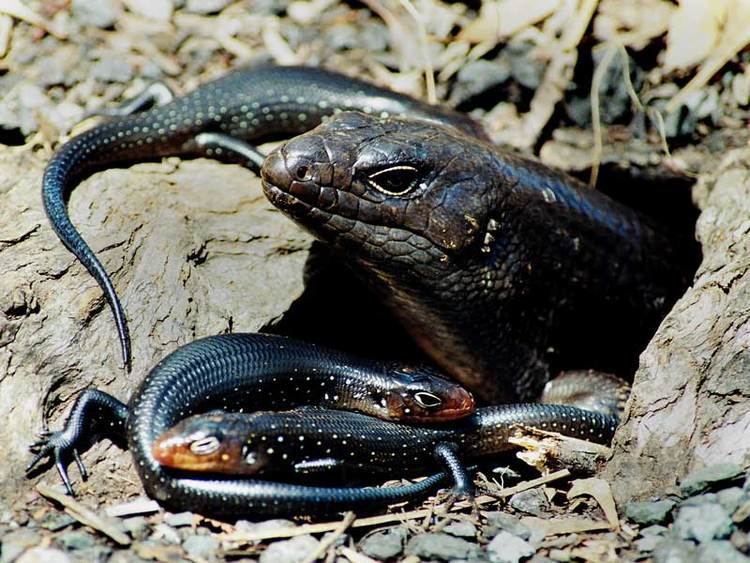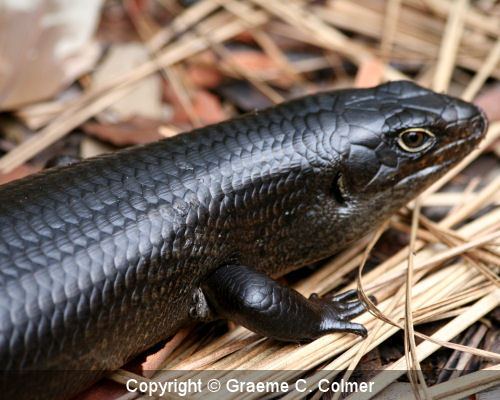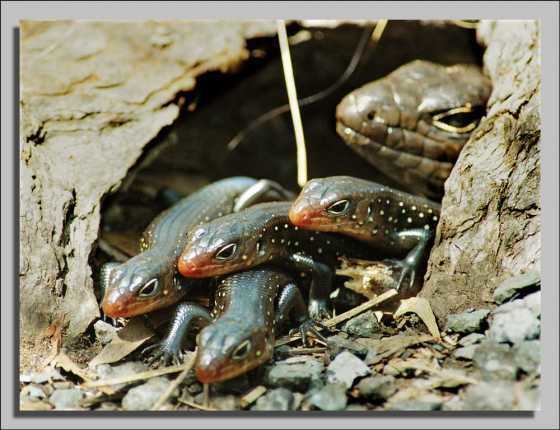Kingdom Animalia Order Squamata Genus Egernia Higher classification Egernia | Phylum Chordata Family Scincidae Scientific name Egernia major Rank Species | |
 | ||
Similar Egernia, Skink, Reptile, Cunningham's skink, Egernia striolata | ||
Egernia major, also known as land mullet are lizards. They are some of the largest members of the skink family (Scincidae). They can be easily confused with the related Egernia frerei, the major skink.
Contents
- Australian land mullet egernia major queensland australia
- Description
- Habitat and Distribution
- Behaviour
- Reproduction
- Diet
- References

Australian land mullet egernia major queensland australia
Description

The species may reach total lengths of up to 60 cm (23.6 inches). They are uniform glossy black to brown, with a paler ring around the eye. Their colour, along with their large size, allow them to maintain a body temperature of 30 degrees Celsius; they spend much of the day basking in the sun. Adult males have slightly shorter bodies but slightly longer forelimbs and heads than adult females The ventral side (belly) ranges in colouration from auburn (orange-brown) to white Juveniles have prominent cream lateral spots

Egernia major is long-lived - with one captive female lizard known to have lived for at least 23 years

The unusual name comes from the pungent, fishy odour emitted when threatened. The common name "land mullet" is said to date back to Longman (1918), who reported it to be in common usage for the species around Tamborine Mountain. The name probably alludes to the superficial resemblance to the homonymous fish, which has a similarly blunt head, large scales and is of similar size and coloration.
Habitat and Distribution
Native to Australia, they are generally restricted to the rainforest of south-eastern Australia. The range of natural distribution is in discontinuous locations from the northern side of the Hawkesbury River in the south, to the Conondale Range, near Maleny in south eastern Queensland. They occur at altitudes from sea level (Park Beach, New South Wales) to 840 m (Acacia Plateau, Queensland)
The species favours habitat with many fallen logs, and it remains in close proximity to these. The restricted sunlight of the forest type require a number of basking sites to be available. It is less frequently found in other types of environs, such as the open eucalypt woodland of the region.
The lizards shelter in hollow logs or burrows. Often these are dug into the soil-bound root systems of fallen trees.
Behaviour
Land mullets are normally reported to be very shy, dashing noisily to the cover of dense low vegetation if disturbed. However, in some popular National Parks, the lizards have become habituated - scavenging close to humans for scraps at picnic and camping sites.
Reproduction
Land mullets are live-bearing reptiles which usually reproduce roughly 4 to 9 independent offspring per litter. Largely solitary, they primarily associate only when it is time to mate.
Diet
The land mullet eats woody fungi, mushrooms, berries, seeds, insects such as beetles and grasshoppers as well as decaying fruit material
